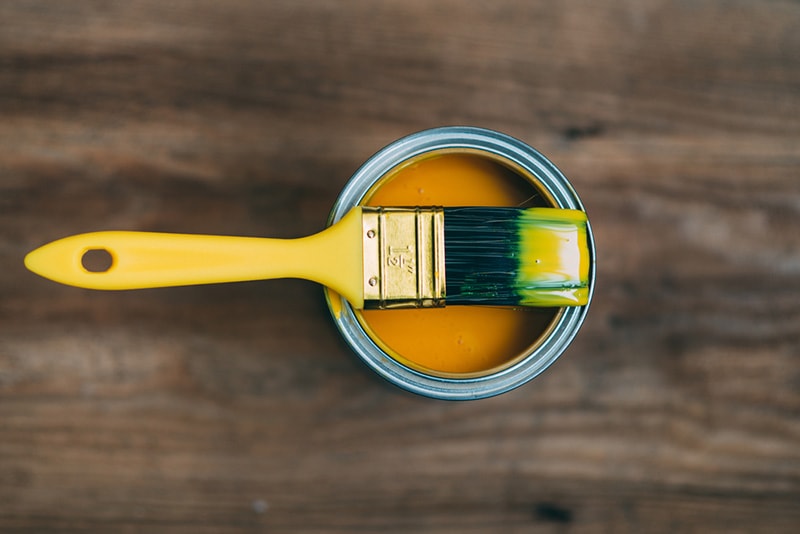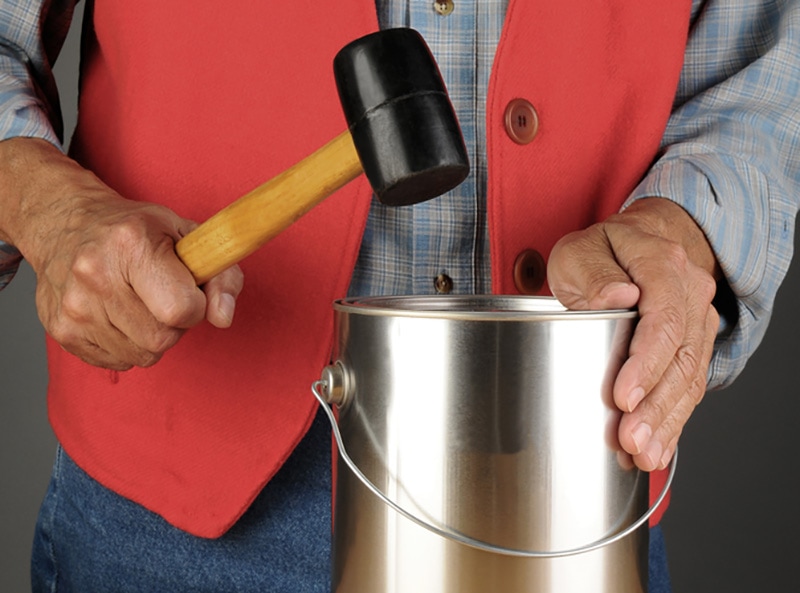How to Store Paint So You Can Keep Reusing It: 7 Great Tips
-
Jeff Weishaupt
- Last updated:

We always have excess paint left after completing a painting project. While some people discard the leftover paint, it’s better to store it safely for future use. You won’t know when this stored paint can come in handy.
Reusing leftover paint is an affordable way to make touch-ups on your old belongings without going to the market. However, to keep the paint reusable after a few years, you must know how to store it properly. For instance, the storage area and the temperature should also be ideal for the leftover paint.
This article discusses seven great tips to store your paint for future use. From the ideal place and temperature to signs of spoiled paint, we have covered everything you must know. So, let’s dive in!

Why Should You Store Paint?
Storing leftover paint extends its lifetime. Paints are relatively costly, so reusing them can help you save money and offer an accessible way to make home improvements whenever you want. You also don’t have to rush to the store!
Moreover, sometimes it’s challenging to remember the exact shade or name of paint. If you want to use the same paint again, you can use the stored one instead of wasting time remembering its name or shade.
Storing paint is also the best way to achieve sustainability. You can also donate the leftover stored paint to a recycling facility or a non-governmental institution under construction.

How to Store Leftover Paint for Future Use
When storing leftover paint, you must consider some important things to do the process easily. Keeping the paint in the wrong place can spoil it even before the actual time. Here are seven tips for doing the job properly:
1. Store the Paint in a Dry Place
The ideal place to store leftover paint should be cool, dry, and away from direct sunlight. The storage area should be out of reach of pets and children and far from edible items. If you have latex paint, you’d have to store it in a lined metal can or a glass or plastic container to prevent rust.
2. Ensure the Ideal Storing Temperature
You must store paint at a temperature between 60°F to 80°F or 15°C to 27°C. If you’re storing the paint in your garage, you should consider the outside weather. If it’s cold, it’s better not to store the paint there as it may freeze.
3. Reseal the Lid Properly
When resealing the paint, you should close the can’s lid properly. Then, clean the edges or rims of both the can and its lid properly. The number one rule to preserve the paint’s texture is to immediately put its lid back on when using.
You can create an air-tight seal if you store the paint in its original container. After cleaning the edges, place a plastic wrap piece between the can’s opening and the lid. To make it more effective, you can use a rubber mallet to seal the lid’s edges more firmly.
It’s recommended to place the paint container upside down. This prevents air from further entering the container’s lid.

4. Use an Air-tight Container
You can also buy an air-tight container and transfer the leftover paint in it for storage. Air-tight glass and lidded mason jars are the best choices for storing paint. They both are eco-friendly, allowing you to clean and reuse them until you use all the leftover paint.
When buying an air-tight container, you must ensure that it is not too big for the amount of paint you have. It will reduce air exposure. You should also take care of other things, such as light exposure and storing the can in a cool, dry place. Remember to keep transferring the paint into smaller containers as you use it.
5. Label the Container
Labeling the container will prevent the hassle of opening and checking each can one by one when making touch-ups. The label should have all the details about the paint, such as its shade, name, and contents. Make sure to use a permanent marker when labeling the outside of the container.
You can also put a little drop of paint on the top of the can to easily distinguish similar shades in the future. You can include the below details in your container’s label:
- Product name
- Paint’s brand
- Color
- Type of paint
- Finish
- Where you used the paint (furniture, room, wall, etc.)
6. Preserve Paint During a Project
You can preserve the paint during a project to use it after some time. For example, if you take a break for a few days, you can store the paint for the short term by resealing the can immediately. Again, make sure to keep the container in a moderate environment in a cool, dry place away from the sunlight.

7. Store Your Painting Tools
When storing the leftover paint, you should also focus on storing your painting tools properly to reuse them in the future. This applies not only after completing the paint job but also in the middle of it.
During the project, wrap the roller covers and brushes in clear plastic wrap to prevent them from air exposure. If you won’t use the painting tools for a long time, wrap them in clear plastic and place them in the refrigerator. However, remember that this storage tip will be effective for a maximum of one week.
Whenever you take the tools out of the refrigerator, leave them for a few minutes at room temperature. This will allow the brushes and rollers to warm up a little for smooth paint application.
How Long Does Paint Last?
Open paint usually lasts 2 years, while unopened containers can stay viable for 15 years. However, if you have stored a resealed paint container, it will last for a decade. These are general timelines that may vary depending on the texture quality and mixture of your paint brand.
The area, temperature, and conditions of your paint storage also affect the product’s lifetime. Ideal conditions may extend their lifetime, but prolonged sunlight, moisture, or heat exposures can cause the paint to age faster.
How to Identify Spoiled Paint
Storing spoiled paint is nothing but a waste of time, energy, and resources. Even if you store the spoiled paint in ideal conditions, it won’t restore its original texture or quality. Therefore, you should know whether your paint has expired or not.
Here are three signs of spoiled paint that you should look for before storing it:
Foul Smell
The most prominent sign of spoiled paint is a pungent smell or foul odor that seems like cat urine or rotten eggs. The smell also resembles that of ammonia. Over time, bacteria start to grow in the paint, causing an air leak in the can.
To prevent this, you should not use a dull paint can opener to close or open your paint containers. That is because it may produce an uneven connection close to the can’s rims, preventing air-tight sealing.

Mold Growth
If you spot mold growth near the can’s rims or the lid’s edges, know that the pain is not viable for further use. In fact, if you paint any part of your house with mold-containing paint, it could lead to further spread throughout your entire home.
You should also take preventive measures when using a paint sprayer as it may disperse harmful bacteria in your home’s environment. Wearing eye protection and a ventilator is the best way to prevent mold spread.
Rough Texture
When using old paint, you should apply a small section of it and let it dry before using it on a large surface. If the coat doesn’t look like your previous paint job in texture and finish, don’t use it further. The chances are that the paint has spoiled, and you will see a drastic change between the new touch-up and the previous paint job.
Using spoiled paint in your home can lead to a pungent smell and inconsistent consistent texture. So, don’t take any chances with spoiled paint. Even if you doubt that the paint has exceeded its shelf life, dispose of it immediately and safely.
Note: You can reuse the paint even if it has hit its expiry time but has a smooth consistency and no strong, foul odor.

Conclusion
Storing leftover paint is the best way to reduce waste and promote sustainability. It also prevents going to the market again and again whenever your home needs touch-ups. However, you should know the right way to store paint to keep it viable for a long time.
You can extend your paint life by storing it in a cool, dry place away from direct sunlight. This storage area should have an optimal temperature of 60°F–80°F, which is ideal for preserving the paint’s original texture.
Remember to seal the can’s lid properly to block air exposure. Also, store your painting tools properly!
Featured Image Credit: Sofia Iartseva, Shutterstock
Contents
